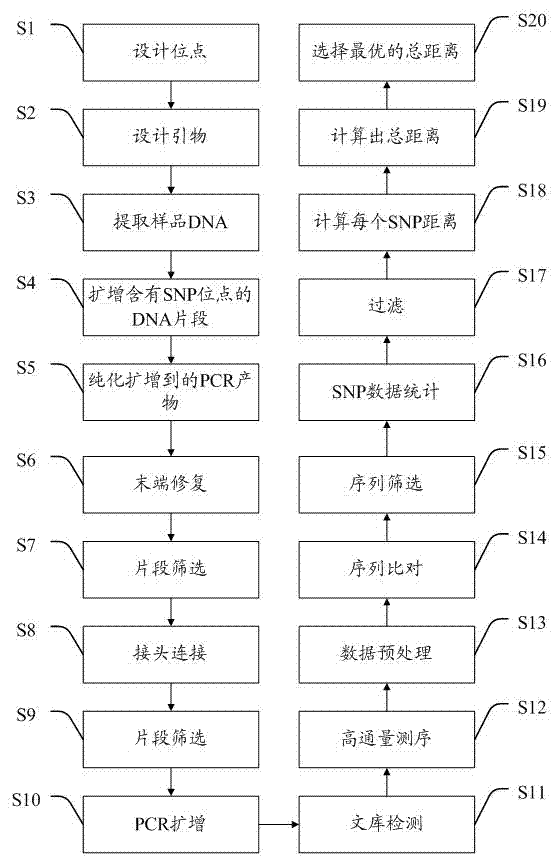Quantitative method for free fetal DNA (deoxyribonucleic acid) proportion in maternal peripheral blood
A technology for the peripheral blood and fetus of pregnant women, applied in the field of DNA quantification, can solve the problems of low accuracy and easy deviation, and achieve the effect of improving accuracy
- Summary
- Abstract
- Description
- Claims
- Application Information
AI Technical Summary
Problems solved by technology
Method used
Image
Examples
specific Embodiment
[0090] The present invention introduces the DNA high-throughput sequencing method into the technology for measuring the proportion of fetal free DNA in pregnant women's free DNA, and the flow of the specific application process is further described in conjunction with specific examples.
[0091] 1. Materials
[0092] The samples provided were 4 cases of peripheral blood of pregnant women with unknown fetal cell-free DNA concentration, including 2 cases of male fetuses and 2 cases of female fetuses. DNA concentrations were compared.
[0093] High-throughput sequencing reagents are mainly composed of 3 kits, library construction kit (amplification library construction kit and ligation library construction kit); sequencing template preparation kit and sequencing kit.
[0094] 2. Method
[0095] The four samples were built and processed on the computer according to the above experimental steps to obtain sample data, and then data analysis was performed.
[0096] 1) Data pr...
PUM
 Login to View More
Login to View More Abstract
Description
Claims
Application Information
 Login to View More
Login to View More - R&D
- Intellectual Property
- Life Sciences
- Materials
- Tech Scout
- Unparalleled Data Quality
- Higher Quality Content
- 60% Fewer Hallucinations
Browse by: Latest US Patents, China's latest patents, Technical Efficacy Thesaurus, Application Domain, Technology Topic, Popular Technical Reports.
© 2025 PatSnap. All rights reserved.Legal|Privacy policy|Modern Slavery Act Transparency Statement|Sitemap|About US| Contact US: help@patsnap.com

